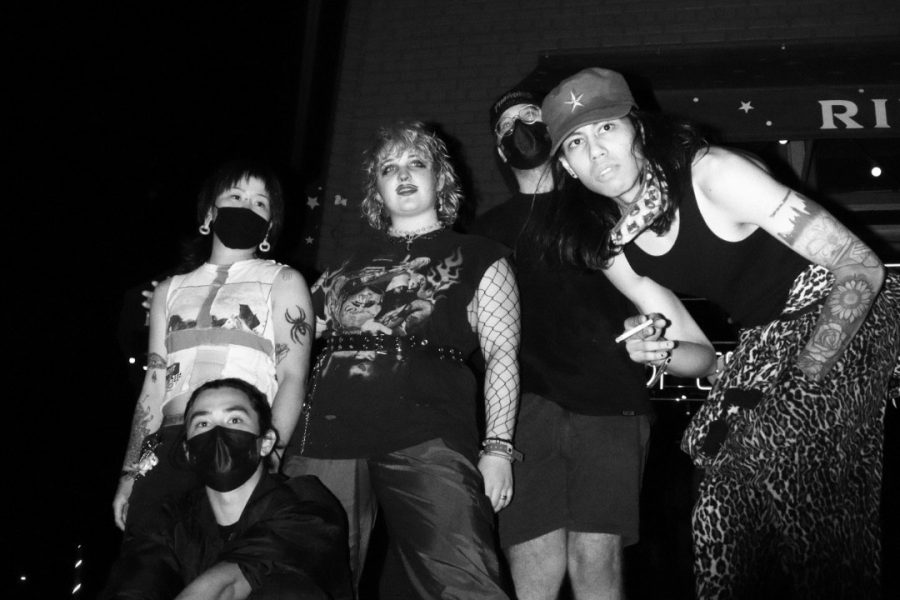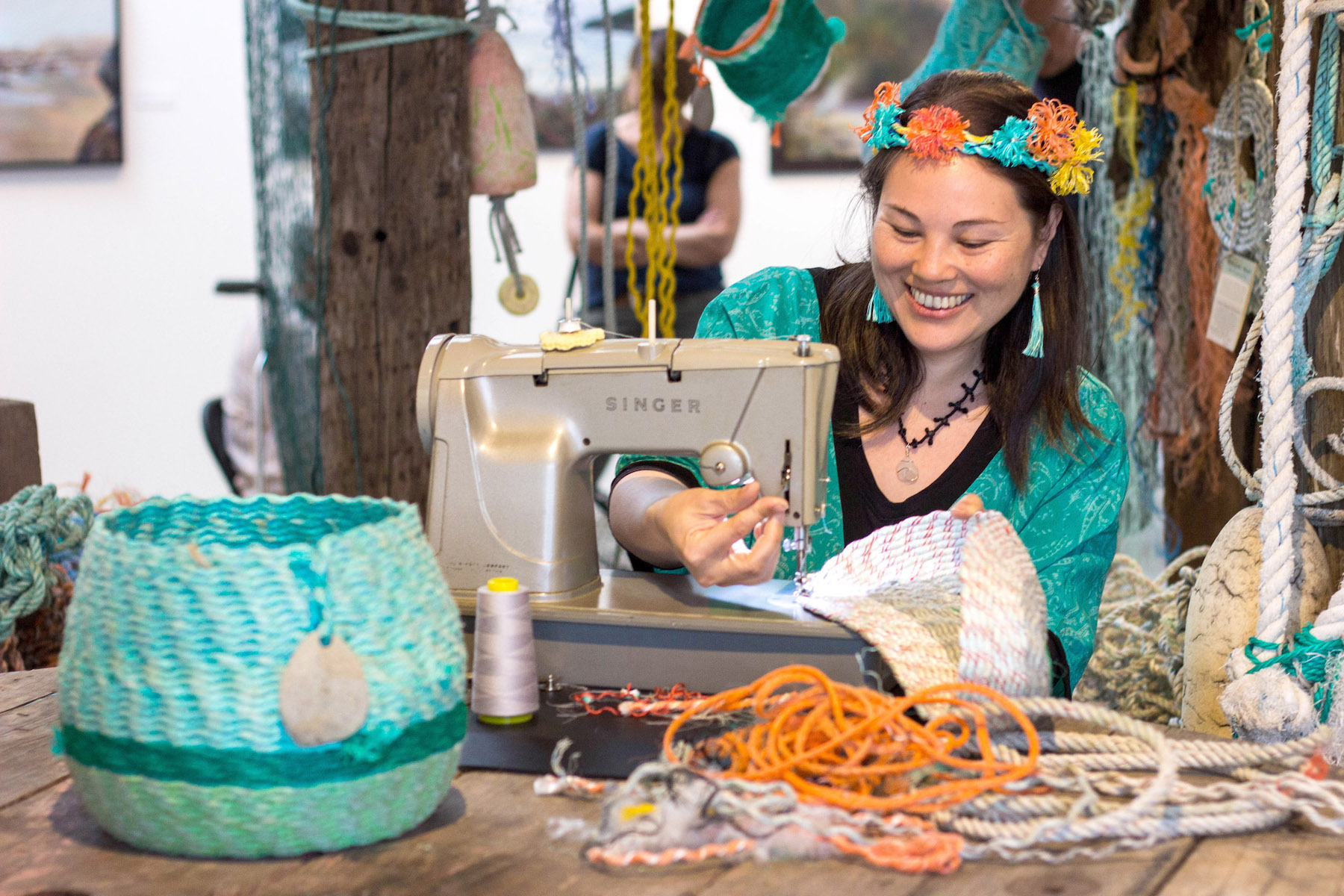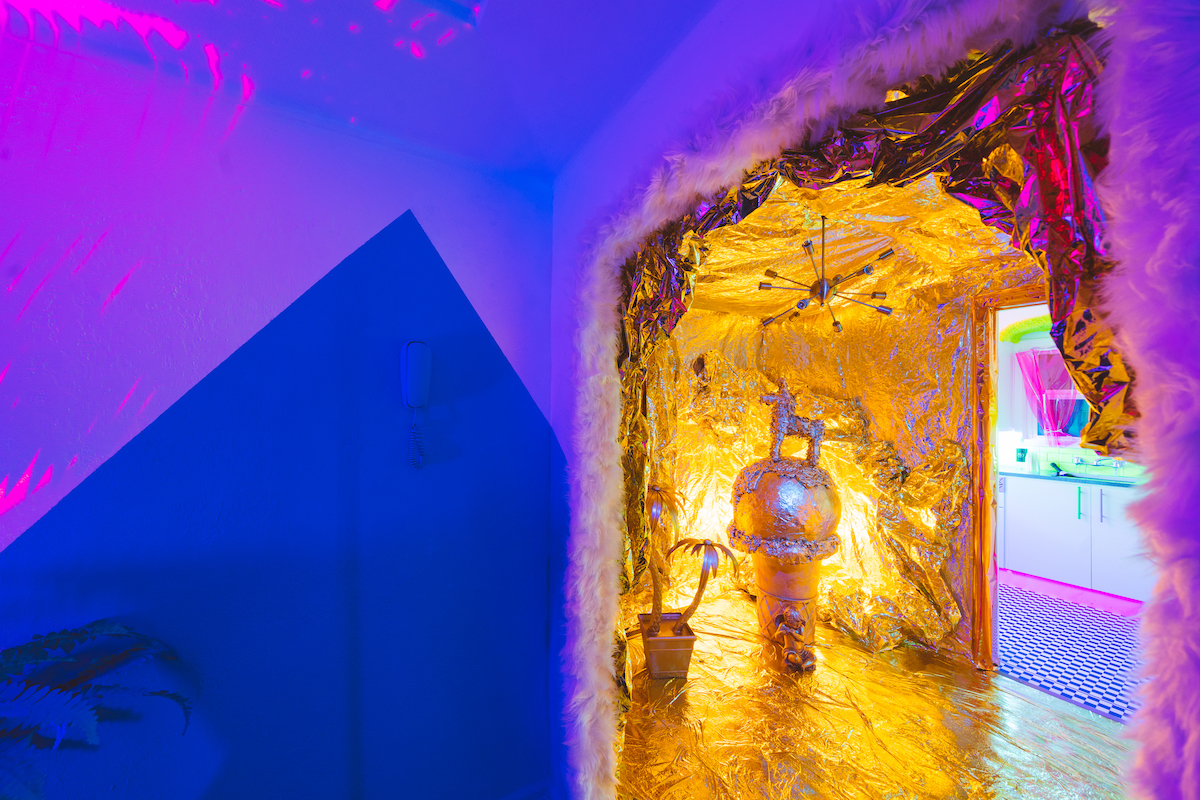For the past five months, five Portland-area artists have sorted through mountains of discarded objects at the Metro Central Transfer Station (aka the “dump”), hand-selecting items to turn into the art on view at the 2021 GLEAN exhibition. Formed in 2010, the mission of the annual GLEAN juried art program is to use art to make people think about their consumption and waste habits.
This year’s artists include two people from the Portland State University community: Caryn Aasness and Jessica (Tyner) Mehta.
Aasness is an MFA candidate in Portland State University’s Art and Social Practice program. They also hold a BFA in Fiber from California State University, Long Beach.
Aasness said that the resident community of PSU artists had a decisive impact on their work.
“[It] is so unique and everyone involved, from the instructors to my fellow students, have worked so hard to build a community even when we are mostly remote,” Aasness said. “Having the combined power of all these amazing artists’ brains help me solve problems and figure out my practice has been a really incredible experience.”
Textiles are a common feature in both of their artworks. At the exhibition’s opening reception, Aasness described a memorable moment at the dump when workers showed them a chest filled with baby christening gowns, hand knit items and other fabric-based family heirlooms. Aasness’ art for GLEAN was divided into a series of photographs of arranged fabrics hung alongside a series of white plates turned into commemorations of the dump.
The “Patterns of the Dump” plates depict colorful patterns found on discarded fabrics while the piece “Great Moments in Dump History” shows unusual sights from the artist’s time gleaning meaning from the garbage—including an ominous sign with the words Demons Beyond scribbled onto it. In their artist statement, Aasness elaborates on some of the inspiration driving their art.
“This body of work is my own campy cartoon embodiment of the anxiety I feel about owning and making objects when we live increasingly close to our own vast piles of waste,” they stated.
Mehta is another GLEAN artist-in-residence who hails from the PSU arts community. She holds a BA in English Literature and MSc in Writing with a specialization in Book Publishing from PSU. A multi-award-winning Aniyunwiya, queer, interdisciplinary author and artist, she also has a PhD in English from the University of Exeter, England.
Her installation piece “Beguiled” is currently on display at the Jordan Schnitzer Museum of Art at PSU as part of the Black Lives Matter Artist Grant Exhibition. The installation led her to reflect on the journey she has been on since her time at PSU.
“Portland will always be home,” Mehta said. “PSU is where I grew up really…[the school] is foundational in probably every facet of myself, personally, professionally, creatively.”
“Strong FoundNations,” Mehta’s artistic contribution to this year’s GLEAN showing, confronted the viewer with the history of Indigenous children being relocated to residential boarding schools in the United States and Canada.
The series started as chunks of discarded building materials—concrete, bricks and rebar—which Mehta lightly chiseled. After finding a vintage typewriter at the dump, she had it repaired, and typed copies of her poem “FoundNations” on onion paper, also gleaned from the dump. The poems were pasted onto the building materials—and under Mehta’s guidance—her children applied their handprints in red paint onto the pieces. This series is a companion installation to “The Red C[h]airn Project,” which Mehta completed during her residency at Ucross Art Gallery in Clearmont, Wyoming.
At the exhibition’s opening, she explained that her father is a survivor of such boarding schools, and emphasized the immense amount of work that still needs to be done in Canada and the U.S. to investigate the deaths of children forced into residential boarding programs. In her artist statement, she explained her views on exposing this ignored reality.
“As an Indigenous artist, I consider it my responsibility to use my platforms and work as a means for amplifying Native voices, realities and experiences,” Mehta stated. “I create opportunities for sparking discourse and highlighting the authenticities and histories prevalent to NDN (Indian) country.”
As part of her activism-oriented work, Mehta will donate 60% of all sales to The National Native American Boarding School Healing Coalition.
The 2021 GLEAN exhibition also includes art from Colin Kippen, Malia Jensen and Willie Little.
Kippen is a Portland-area adjunct professor of sculpture, design and drawing at Portland Community College and Clark College in Vancouver, WA. His pieces for GLEAN consist of paper-pulp castings of everyday items which were spray painted with many colors, revealing the texture of the original item. Kippen described his creative process in his artist statement.
“These surfaces may begin as plain brown castings of couch fabric or corrugated roofing, but they end up like those false-color topographic photos depicting the surface of Mars,” he stated. “Things intimate, banal, and familiar translate into something skin-like, mysterious, and extra-terrestrial.”
Jensen is a Portland-based artist known primarily for her work in sculpture and video. Her pieces for GLEAN include several sculptures and videos, including a reconstruction of a cat sculpture she first made as a child, and a video of a Le Creuset pan found at the dump she left in her yard for many animals to interact with. She compared her experience with GLEAN to a kind of personal archeology.
“Examining things we’d like to bury has been the theme of this residency for me,” Jensen stated. “Contemplating the near misses, abject failures, broken histories and myriad discarded things with curiosity and a willingness to make something else has been a reminder that we’re always at the beginning of something new.”
Little said that much of his art stems from his own experiences growing up as a Black man in the rural south. Many of his past works have focused on racism, but this series, “Misfit Toys…Gender Defining Roles from Childhood,” examined ideas of gender conformity and the pressures he faced as a child to fit ideas of masculinity imposed on him by his family and society.
The series presents gendered toys in a different light than their designers intended. The toys for boys are dressed up with sequins and glitter, while the toys for girls are made to look worn and tattered—some of them adorned with cockleburs, symbolizing the messages boys receive to steer clear of such items. In his artist statement, Little described the traditionally male toys as being “joyfully reclaimed, flamboyantly gay in satirical irony.”
Little’s work, along with that of the other four artists featured in GLEAN’s 2021 residency, can be viewed at GLEAN’s gallery space, which will be presenting until Feb. 25, 2022.





